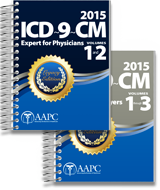Diagnosis coding systems date back to the 17th century, when they were originally developed to track the number of deaths in children. Today, coding has been significantly expanded to serve many different purposes. Not only are coding systems designed to provide a standardized system for describing and classifying data, but they can also aid in the collection, research, and analysis of specified data.
Coding medical conditions involves assigning codes to written descriptions of the patient’s signs, symptoms, illness, injury, disease, condition, or other reason for care. This process translates medical record documentation into codes. Currently, the manual in use is the ICD-9-CM, which is the International Classification of Diseases, 9th Revision, Clinical Modification. On October 1, 2015, it will be replaced by the 10th Revision, which is much more specific and will be detailed in a later post.
Diagnosis coding must establish medical necessity for services rendered. It is imperative that the procedure and the diagnosis correlate. Correct diagnosis codes allow for accurate reimbursement, fewer rejected claims, and reduced risk of audits/fines.
Diagnosis coding is used by the Centers for Disease Control and Prevention (CDC), Centers for Medicare and Medicaid Services (CMS), and 3rd Party Reimbursement Carriers.
